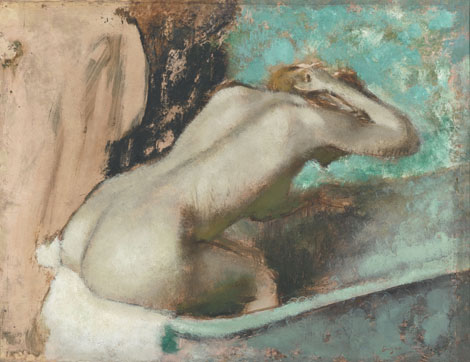The nude in the bath becomes realistic
In the late 19th century, society became more permissive. Nudes were painted for their own sake, in realistic situations. And it is, after all, in the bathtub that one is naked. Edgar Degas made it one of his favorite themes. Yet for all that, it was impossible to paint a respectable woman naked, so the models were most likely to be prostitutes in a brothel.






















